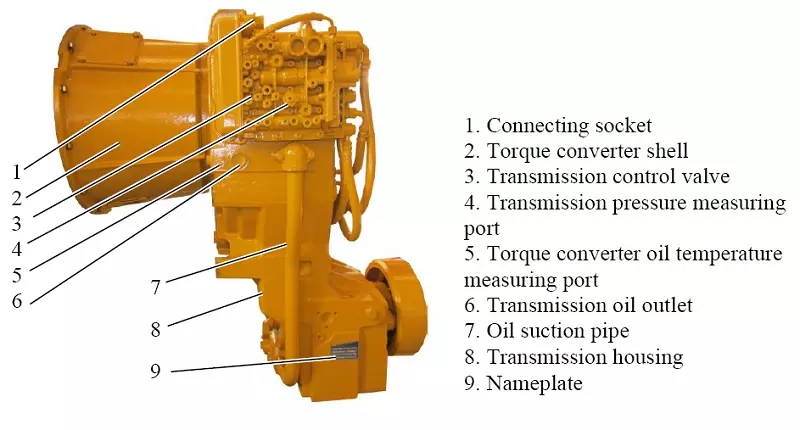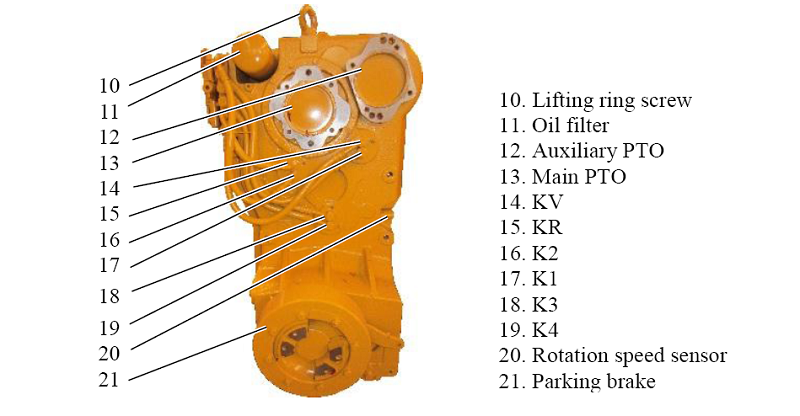Automatic brake adjustment arm (hereinafter referred to as automatic adjustment arm) is a key component in automobiles. In order to improve the safety of the use of vehicles, China released GB12676-1999 "Automobile Brake System Structure and Performance on January 8, 1999". And test method "national standards", which put forward perfect requirements for the performance and test of the automobile brake system, and stipulate that the manual mechanical adjustment arm be forcibly removed after 2002, and that the brake system of the running vehicle must be able to wear the brake. auto-adjust.
In the field of commercial vehicles, there are mainly two types of components that directly actuate brake shoes: one is a camshaft driven by pneumatic pressure, and the other is a hydraulically actuated reciprocating piston that is a brake Cylinder. The former has a wide range of applications, especially medium and heavy vehicles, while the latter is used only in light vehicles and small vehicles due to limited driving power. The brake gap automatic adjustment arm is an automatic gap adjustment device for a drum brake driven by a camshaft.
The friction brake of a drum brake is a brake drum and a brake shoe (sheet), and the gap between them (ie brake clearance) reflects the time and effectiveness of the driver's manipulation of the brake pedal. As the brake shoe wears, the brake gap increases, resulting in increased braking time, increased braking distance, and increased risk; if the wheel brake gap on the same axis is not equal, it will also cause the car Brake deviation: Therefore, it is important to keep the braking gap stable while the vehicle is running. An effective way to achieve this goal is to constantly adjust it. Although the manual adjustment method is simple in structure and low in cost, it needs regular parking maintenance and adjustment, which is laborious, troublesome, and unreliable; therefore, an automatic brake adjusting device has been developed and utilized, and has gradually replaced manual adjustment. method. Some vehicles can still be manually checked and adjusted after the automatic adjustment device is installed.
The brake gap automatic adjustment arm only acts on the excess clearance that is increased by wear of the brake pads. This means that the elastic combination of brake drum, brake pad and S camshaft will not affect the automatic adjustment process. Therefore, the brake gap automatic adjustment arm provides a constant and reasonable between brake pad and brake drum. Clearance. The working principle of the automatic adjustment arm of the brake clearance, the automatic adjustment arm does not work in the elastic range of the brake, and is only automatically adjusted in the clearance area.
The biggest advantage of the automatic brake adjustment arm is that the clearance adjustment is performed at the end of the braking with the minimum torque, thus ensuring safety and long working life.
Transmission spare parts for XCMG , LIUGONG, SDLG, XGMA, DEGONG, SHANTUI wheel loader, excavator spare parts with best price.
wheel loader spare parts ZF 4WG200 4WG180 transmission


Basic terminology for transmission:
(1) Driving gear and driven gear. The input shaft can be understood as connected to the clutch and rotates under the drive of the engine. The gear fixed on the input shaft rotates accordingly. This gear is called the driving gear and the gear connected to the output shaft is forced to rotate. This gear is called a driven gear.
(2) Transmission ratio i. The ratio of the number of Teeth of the driven gear to the number of teeth of the driving gear is defined as the transmission ratio.
When the relationship between the number of teeth of the driven gear and the number of teeth of the driving gear changes, the transmission ratio i changes. Under the condition of constant engine speed, it will affect the output shaft speed change, that is, the wheel speed change. For a pair of gears that mesh with each other, the number of teeth will not change during use, so its transmission ratio is fixed. If a number of gears with unequal numbers of teeth are installed on the input shaft to mesh with gears with varying numbers of teeth on the output shaft, a set of stepped transmissions with different transmission ratios i can be obtained. The automobile transmission is based on this basic principle to realize the gear shift.
(3) Forward gear, a gear position that enables the car to travel forward. Reverse gear is a gear that can make the car go backwards. In neutral, all gears in the transmission are not in the working position. At this time, after the engine power is input to the input shaft, it is no longer transmitted to the output shaft.
(4) Direct files. The engine power is not transmitted by any gears in the transmission, but directly output through the transmission input shaft and the output shaft directly connected to it as a direct gear. The direct gear ratio is 1.
(5) Overdrive gear. That is, the speed of the output shaft is higher than the gear of the input shaft.
(6) Number of files. Refers to the number of gears that the stepped gear transmission has. Commonly used gear transmissions have four to five gears, and three-speed transmissions are rare. The more gears, the better the car's adaptability to driving conditions and the lower the fuel consumption. However, the more complex the transmission mechanism and the operating mechanism, the more difficult the operation and the higher the cost.
(7) Low-end and high-end. In the gears of the transmission, the gear with the smaller number is called low gear. The smaller the number, the greater the transmission ratio, the greater the traction, and the lower the vehicle speed. For example, the transmission ratio of first gear is the largest in the forward gear, the vehicle speed is the lowest, and the traction is the largest. A gear with a large number is called high-end. The larger the number, the smaller the transmission ratio and the lower the traction, but the higher the speed.
(8) Shift gears. The process of changing the transmission ratio of the transmission is called shifting. The gear shift of the adapter sleeve is integrated with the gear, and the gear ring on the tooth side meshes (or separates) with the adapter sleeve to achieve the transmission ratio change is called the adapter sleeve shift. Synchronizer shifts, use synchronizer to shift gears. Not only is there no impact and noise on the engaging teeth, but the shift time is also short.
(9) Skip gears. During the driving of the automobile, due to the wear and vibration of the coupling teeth, the coupling sleeve and the coupling ring gear are separated and the transmission is in a neutral state.
Transmission Box,Wheel Loader Transmission Assy,Transmission Gear Selector,Transmission Oil Radiator
Shandong Tianfu International Trade Co.,Ltd. , https://www.tfloaderparts.com